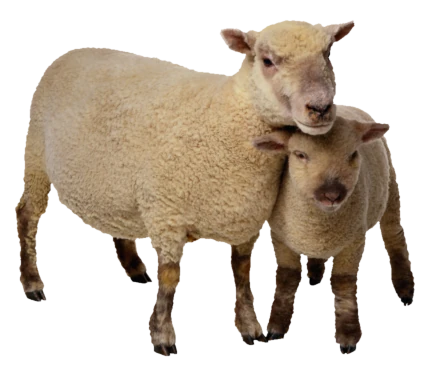The direct impact animal agriculture has on farmed animals is clear.
In the industry, billions of land and trillions of aquatic animals are forced into unnatural quarters, made to live in their own excrements and often killed before reaching the age of one; in the dairy and egg industries, mothers are repeatedly artificially inseminated and separated from their young, causing extreme distress for all (Farm Transparency Project, 2022; RSPCA, 2022).
Not so obvious are the secondary effects this industry has on the environment, which affects all its inhabitants—human and nonhuman.
By 2050, the world’s population is expected to reach 10 billion, requiring an increase in global food production by 70%, with greenhouse gases projected to increase by 80% (Dent, 2020; University of British Columbia, 2016).
It is important to acknowledge the environmental harm the production of animal products causes—including high levels of greenhouse gas emissions, mass deforestation, extreme water use, and water pollution—in order to make sustainable choices that that are less damaging to our environment….
Greenhouse gas emissions
Cows and sheep are ruminant animals with four stomachs containing bacteria that allows them to digest tough, fibrous food, such as grass. This complex digestion process causes them to belch methane—a greenhouse gas that is 30 times more powerful than carbon dioxide (CO2) over the period of 100 years (Dunne, 2020; Petrovic, 2015).
As a result, animal agriculture is responsible for 18% of all greenhouse gases worldwide; to put this into context, animal agriculture contributes more greenhouse gas emissions than all forms of transportation combined, which is responsible for 13% of global emissions (Brown, 2022; Ritchie & Roser, 2021; University of British Columbia, 2016; Stehfest, et al., 2009)….
Deforestation
Meat production is the single greatest cause of deforestation globally, with about half of the world’s habitable land used for this purpose (Brown, 2022; Ritchie & Roser, 2021).
In 2017, the Food & Agriculture Organization of the United Nations (FAO) announced that livestock production uses 70% of all agricultural land; in the last two years, that number grew to 77% (Ritchie & Roser 2021; FAO, 2020; FAO, 2017)….
Water use
About 90 percent of the world’s water footprint comes from agriculture, with the industry currently using 70 percent of all available freshwater—three times more than what was used 50 years ago (Holdinghausen, 2021; University of British Columbia, 2016).
Growing crops for livestock feed requires significantly more water than growing fruits, vegetables and beans for direct human consumption (FoodPrint, 2022; University of British Columbia, 2016).
As a result, producing a single pound of beef takes about 1,800 gallons (8,183 litres) of water—the equivalent of filling 39 bathtubs to the top (A Greener World, 2022; FoodPrint, 2022; Madel, 2022; Delynko, 2019).
While requiring less water, pork (720 gallons/pound), goat meat (660 gallons/pound), and chicken (520 gallons/pound) remain unsustainable alternatives (A Greener World, 2022).
On the other hand, a serving of black beans requires only 49 gallons of water (Madel, 2022)….
Water pollution
When water is not being used for meat, dairy and egg production, it is being infected with toxins and waste from the industry. The mass number of crops to feed livestock are treated with extreme amounts of fertilizers and pesticides (including herbicides, insecticides, fungicides and bactericides), the excess of which runs off into surrounding waterways (Brown, 2022; Clean Water Action, 2022; FAO, 2017)….
Natalie Brown put the urgency of the issue this way:

